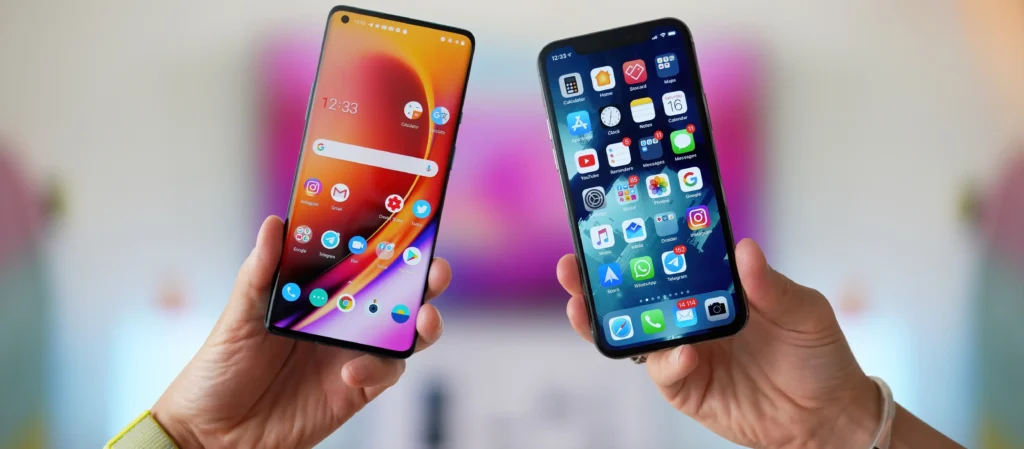Introduction
The smartphone has revolutionized the way we communicate, work, and live our daily lives. From its humble beginnings as a simple mobile phone with added computing capabilities, it has evolved into an essential device that integrates multiple functionalities into one compact form. This article explores The Evolution of Smartphones, tracing its development from the first concepts to the sophisticated devices we use today.
Early Mobile Phones: Setting the Stage
The First Mobile Phones
The journey towards the smartphone began with the invention of the first mobile phones in the 1970s and 1980s. These early devices were large, expensive, and primarily used for voice communication.
- Motorola DynaTAC 8000X (1983): Known as the first commercially available handheld mobile phone, the DynaTAC 8000X was a brick-like device that weighed nearly two pounds and offered only 30 minutes of talk time.
The Introduction of SMS
In the early 1990s, the introduction of Short Message Service (SMS) added a new dimension to mobile communication, allowing users to send text messages. This was a significant step towards more versatile mobile devices.
The Birth of the Smartphone
IBM Simon (1994)
The IBM Simon, released in 1994, is often considered the world’s first smartphone. It combined a mobile phone with a touchscreen PDA (Personal Digital Assistant), offering features such as:
- Calendar
- Address book
- Calculator
- Touchscreen interface
Despite its innovative features, the IBM Simon was bulky, had a short battery life, and was relatively expensive, limiting its widespread adoption.
Nokia 9000 Communicator (1996)
The Nokia 9000 Communicator, launched in 1996, was another early attempt at combining mobile phone and PDA functionalities. It featured a full QWERTY keyboard, a large LCD screen, and various applications such as:
- Fax
- Word processing
- Spreadsheet
The Nokia 9000 Communicator was well-received, particularly in the business community, and set the stage for future developments in mobile technology.
The Rise of Mobile Operating Systems
Palm OS and BlackBerry OS
In the late 1990s and early 2000s, devices running Palm OS and BlackBerry OS gained popularity, particularly among business users.
- Palm OS: Known for its intuitive interface and robust applications, Palm OS devices like the PalmPilot were popular PDAs that eventually integrated mobile phone capabilities.
- BlackBerry OS: BlackBerry devices, launched by Research In Motion (RIM), were renowned for their secure email services and physical keyboards, making them a favorite among corporate users.
Symbian OS
Symbian OS, initially developed by Psion and later supported by Nokia, Ericsson, and Motorola, became one of the most widely used mobile operating systems in the early 2000s. Symbian-powered devices offered a range of features, including:
- Multitasking
- Web browsing
- Multimedia capabilities
The Smartphone Revolution
The Introduction of the iPhone (2007)
The launch of the Apple iPhone in 2007 marked a turning point in the history of smartphones. The iPhone introduced several groundbreaking features that set new standards for mobile devices:
- Capacitive touchscreen with multi-touch capabilities
- App Store for downloading third-party applications
- Intuitive user interface with gestures and animations
- Robust media player for music and video
The iPhone’s sleek design, coupled with its powerful hardware and software integration, made it an instant success and paved the way for the modern smartphone era.
The Emergence of Android (2008)
Following the iPhone, Google launched the Android operating system in 2008. Android was an open-source platform that allowed various manufacturers to create their own smartphones, leading to a diverse ecosystem of devices. Key features of Android included:
- Customizable user interface
- Extensive app ecosystem through the Google Play Store
- Integration with Google services
Android’s flexibility and widespread adoption by manufacturers like Samsung, HTC, and LG helped it become the dominant mobile operating system globally.
The Evolution of Smartphone Features
Advancements in Hardware
Over the years, smartphones have seen significant advancements in hardware, including:
- Processors: Modern smartphones are powered by advanced processors, providing computing power comparable to that of laptops.
- Displays: High-resolution screens, such as OLED and AMOLED, offer vibrant colors and sharp images.
- Cameras: Smartphones now feature multiple high-resolution cameras with advanced capabilities like optical zoom, night mode, and AI enhancements.
- Battery Life: Improved battery technology and energy-efficient components have extended the battery life of smartphones.
Connectivity and Networking
Smartphones have also benefited from advancements in connectivity and networking technologies:
- 4G and 5G Networks: High-speed data networks have enabled faster internet access, seamless video streaming, and low-latency gaming.
- Wi-Fi and Bluetooth: Enhanced wireless technologies allow for better connectivity with other devices and accessories.
Software Innovations
Software innovations have played a crucial role in the evolution of smartphones:
- App Ecosystems: The availability of millions of apps through platforms like the App Store and Google Play Store has expanded the functionality of smartphones.
- Artificial Intelligence: AI and machine learning have enabled features like voice assistants (Siri, Google Assistant), predictive text, and enhanced camera capabilities.
- Security: Biometric authentication methods, such as fingerprint scanners and facial recognition, have improved the security of smartphones.
The Future of Smartphones
As we look to the future, several trends and technologies are poised to shape the next generation of smartphones:
Foldable and Flexible Displays
Foldable smartphones, such as the Samsung Galaxy Fold and Huawei Mate X, represent a new form factor that combines the portability of a smartphone with the larger screen of a tablet. Flexible display technology is expected to continue evolving, offering new possibilities for device design and user experiences.
Augmented Reality (AR) and Virtual Reality (VR)
AR and VR technologies are becoming more integrated into smartphones, providing immersive experiences for gaming, education, and entertainment. Future smartphones are likely to feature more advanced AR and VR capabilities, enhancing their utility and appeal.
Enhanced AI and Machine Learning
AI and machine learning will continue to play a central role in the development of smartphones, enabling more personalized and intuitive user experiences. From voice recognition to predictive text to intelligent camera features, AI will enhance the functionality and usability of smartphones.
Improved Battery Technology
Advancements in battery technology, such as solid-state batteries, are expected to extend the battery life of smartphones and reduce charging times. This will address one of the most common pain points for smartphone users.
Integration with IoT
The integration of smartphones with the Internet of Things (IoT) will enable seamless connectivity and control of smart home devices, wearables, and other connected gadgets. This will further enhance the role of smartphones as central hubs for managing our digital lives.
Conclusion
The journey of smartphones from their inception to their current state as indispensable tools of modern life has been remarkable. With continuous advancements in hardware, software, and connectivity, smartphones are set to become even more powerful and versatile in the future. As technology evolves, smartphones will continue to shape the way we live, work, and interact with the world around us.
Key Takeaways
- The evolution of smartphones began with early mobile phones and PDAs, culminating in the revolutionary launch of the iPhone in 2007.
- The introduction of Android in 2008 led to a diverse ecosystem of smartphones, driving widespread adoption and innovation.
- Advancements in hardware, software, and connectivity have continuously enhanced the capabilities of smartphones.
- Future trends, such as foldable displays, AR/VR integration, and improved AI, will shape the next generation of smartphones.
- Smartphones will continue to play a central role in our digital lives, integrating with IoT and providing new functionalities and experiences.
















